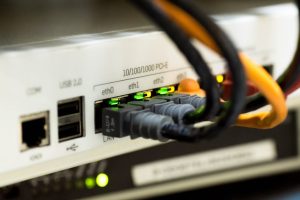How Starlink Revolutionized Internet Connectivity in Ukraine and Beyond

In the wake of Russia’s invasion of Ukraine in 2022, the country’s communication infrastructure faced unprecedented challenges. Internet disruptions became widespread as a result of cyberattacks, power outages, and damaged fiber-optic cables, leaving citizens and institutions struggling to stay connected. Amid this chaos, Elon Musk’s Starlink emerged as a beacon of hope. The revolutionary low-Earth-orbit (LEO) satellite-based Internet service began providing vital connectivity, particularly for Ukraine’s military forces, ensuring that critical communication lines remained intact.
The Lifeline of Starlink During Wartime

Pexels
Starlink’s contribution went beyond merely restoring Internet access; it became a lifeline in a rapidly changing wartime landscape. When the first batch of Starlink terminals reached Kyiv in March 2022, it marked the beginning of a new era for satellite-based connectivity. Leveraging its advanced optical inter-satellite laser links (OISL), Starlink enabled users to relay signals across its satellite network, bypassing traditional ground stations. This approach provided both resilience and scalability, ensuring uninterrupted Internet access even in active war zones where ground infrastructure was compromised.
Notably, the data collected from Starlink’s GeoIP files—essentially self-reported geolocations of IP ranges—offers a unique insight into the dramatic growth of the service. Over 3.5 years, the GeoIP file expanded from 1,535 to 2,789 entries, with coverage increasing from 41 to 169 countries. These records not only illustrate the evolution of Starlink’s global network but also highlight its pivotal role in bridging the digital divide in areas that lack reliable Internet access.
Unpacking Starlink’s GeoIP Data Trends

Pexels
Starlink’s GeoIP data showcases fascinating variations in IP range assignments and prefix sizes over time. Initially dominated by IPv4 prefixes like /27 (32 unique addresses), the service now primarily assigns larger prefixes such as /24 (256 addresses). Similarly, the introduction of IPv6 services saw a significant shift, with /42 and /40 prefixes becoming more common to accommodate millions of users across different regions.
In addition to geographical growth, the frequency and timing of updates to Starlink’s GeoIP file reveal patterns of activity. Most updates occur between 20:00 and 02:00 UTC, aligning with downtime in network demand. Interestingly, a surge in daily updates was observed starting in February 2024, reflecting perhaps an accelerated rollout of new service areas and operational enhancements.
Starlink’s Transformative Impact on Global Connectivity

Pexels
The implications of Starlink’s growth extend far beyond Ukraine. By deploying cutting-edge satellite technology, Starlink is reshaping the global Internet landscape. Its ability to provide high-speed connectivity in remote and underserved areas positions it as a crucial player in reducing the digital divide. Even in regions like India, where the service is not yet authorized, placeholders in the GeoIP file suggest future ambitions to bring connectivity to the world’s most populous markets.
As the service continues to expand, the unprecedented scale of Starlink’s infrastructure offers a glimpse into the future of satellite-based communication. Its real-time adaptability, combined with breakthroughs in IPv6 adoption and inter-satellite communication, ensures that Starlink will remain a central pillar in the evolution of global Internet connectivity.
In summary, Starlink’s journey over the past few years has demonstrated its transformative potential. As analysts like Doug Madory continue to uncover trends within Starlink’s GeoIP data, it becomes increasingly clear that this satellite technology is not just addressing immediate challenges but also paving the way for a more connected global community.




